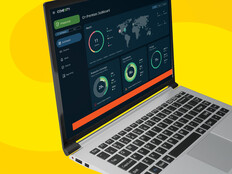Feds’ Cloud Benefits Are Undercut by Data Fragmentation
Cloud technologies allows agencies to shift major IT functions such as computing, storage, networking and databases to a cloud service provider. Cloud-based apps can be centrally hosted, licensed on a subscription basis and can save agencies money.
However, when data is spread across numerous IT environments, including in the public cloud, it can become siloed. If agencies cannot integrate all of their data into a cohesive platform, they risk not being able to fully analyze and derive insights from that data.
Essentially, data fragmentation is undermining the benefits of moving to the cloud, according to a recent survey conducted by data management firm Cohesity. The company commissioned Vanson Bourne to survey about 900 global IT leaders, 115 of them in the public sector, to understand data fragmentation.
Among public sector respondents, 71 percent reported that their organizations had realized only some cloud benefits, according to FedScoop. Of those, 89 percent reported that was due to data fragmentation, and that it might become unmanageable.
“Almost every person that we interviewed had very high ratings of cloud, and almost 100% said they intend to increase their utilization of cloud,” Davis Johnson, vice president of federal at Cohesity, tells FedScoop.
The Drawbacks of Data Fragmentation in the Cloud
According to the survey, 91 percent of all of respondents reported that they believed the cloud would “simplify operations, increase agility, reduce costs and provide greater insights, but many of those hopes haven’t come to fruition.”
Data fragmentation is a key reason that, of those organizations that believe the promise of the public cloud hasn’t been fully delivered, 91 percent identified mass data fragmentation as the cause. Nearly all — 88 percent — “agree that solving mass data fragmentation would help their organization realize the original promise of the cloud, including more effective analysis, reduced compliance risk and improved customer experience.”
Data fragmentation is not limited to legacy data centers, the report notes. “IT teams now have to deal with a new collection of data silos being created in multiple clouds for offsite backups, long term archives, second tier storage, test and development systems and analytics pools, with almost no visibility or governance of the data’s content or location.”
What makes the situation even more complicated is that many organizations “make and store more copies of the same data in cloud environments,” on average three copies of the same data, according to the survey.
Cohesity says agencies should shift to a single data platform. “The biggest benefit probably is better customer experience,” Johnson tells FedScoop. “With the analytics that go into having all of your data globally indexed and available on a single data platform, you can start to gain better insights.”
Platforms can give agencies scalability and efficiency, Johnson notes. He adds that often agencies want to deploy a data protection use case before shifting to analytics, testing and development.
“Data protection had become kind of the forgotten IT use case, where there was not a lot of innovation and investment being made,” he says. “That’s the number one most important thing that we had to tackle, and that was how we typically approach a new client.”






_0.jpg)



